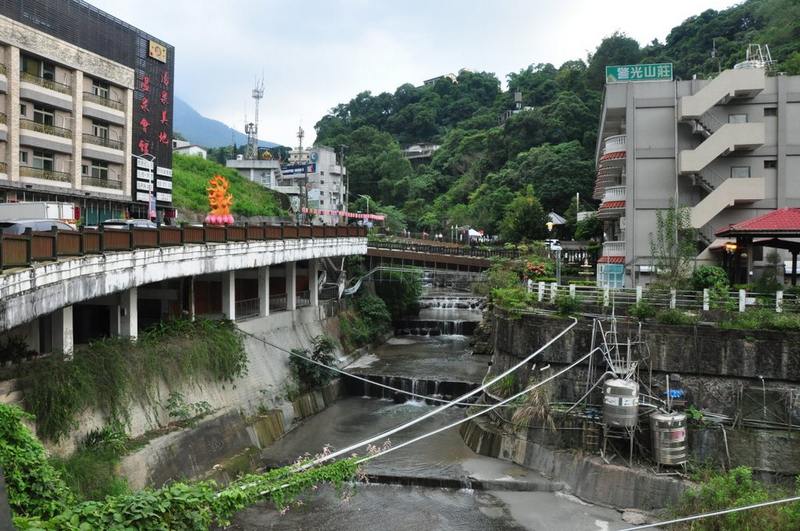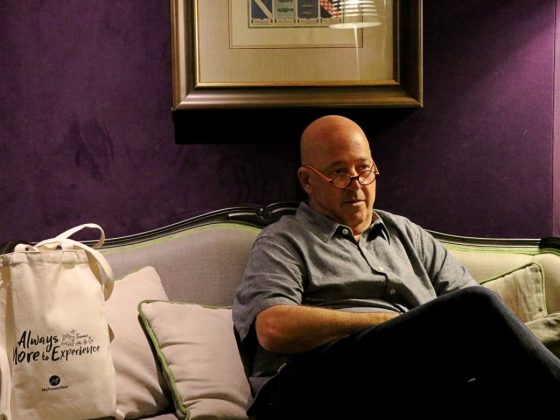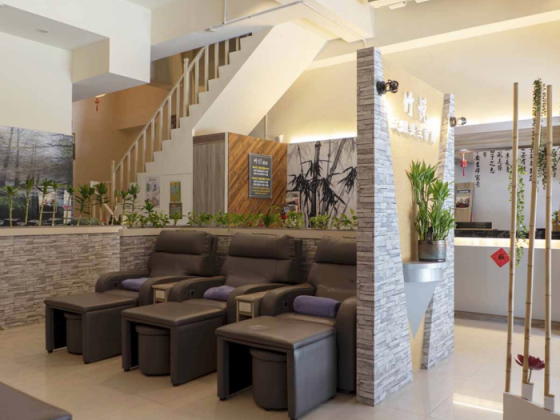With Taiwan’s weather finally cooling, Stephanie and I decided to follow the advice of certain migratory birds and Canadians and head south. We hopped on the High-Speed Rail and got off at Chiayi Station, a quick bus ride away from what’s become our favorite hot spring town in Taiwan, Guanziling, located on the border of Chiayi and Tainan.

Comprising just a few easily-navigated roads, Guanziling offers the usual array of Taiwan mountain town amenities. These include a few lovely temples and shrines, a particularly nice central park, and at least a dozen good restaurants serving items like tu ji (whole roasted free-range chickens cooked in standing ovens) alongside a wide variety of locally-grown vegetables, the sort you’d be hard pressed to find in most Taipei restaurants.
We’d been invited to Guanziling by the Tainan Tourism Bureau to take part in the opening ceremony of 2018’s hot spring season. Arriving just before dark on Saturday evening, the festivities were already in full swing. A pavilion was set up at the bottom of the hill, and several hundred people were milling about, many dressed in traditional Japanese hot spring attire, the Kimono, and Obi (robe and belt) combo.
“When in Rome,” I said, and Stephanie and I headed to the tent handing out loaner hot spring garb and changed out of our city clothes.
The Guanzliling Hot Spring Festival Begins
When the sun went down, there was a brief ceremony on stage with drums, fireworks and music announcing the official opening of hot spring season in Guanziling. Then the parade began.
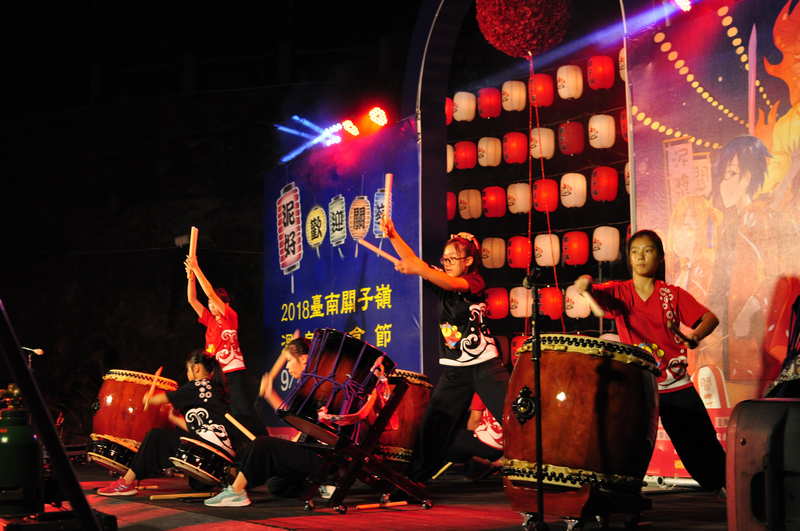
Slowly, with more drumming and fireworks, the procession headed up the hill. One truck held musicians with drums, and another a twenty-foot high lantern representing a deity of fire. At various points, the procession would stop, sometimes for a show featuring fire dancers, other times to allow the electrical wires slung over the road to be gently lifted by a pole with a hook to allow the fire god statue to pass underneath.
The parade continued to the park close to the top of the hill where the music continued through the night as locals served food and drinks to visitors. Hot spring season had officially opened. We stuck around the fairgrounds for a bit before heading down the hill for dinner (half a tu ji and a few local vegetable dishes). Afterward, it was back to our hotel to indulge in the pleasures of the flesh for which the town is well-known.
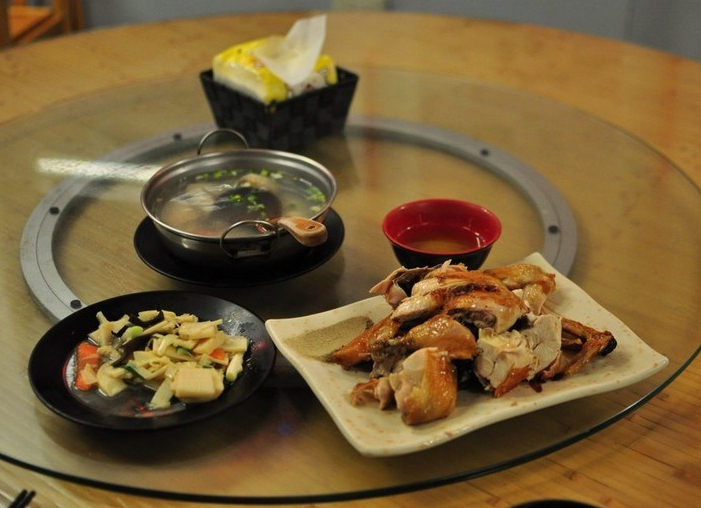
The Mud Springs of Guanziling
Of course, I’m referring to soaking. Because what makes Guanziling truly worth the trip is also what sets it apart from other hot spring areas in Taiwan (and most other hot springs, period), its waters. Guanziling boasts Taiwan’s only “mud hot springs,” a mineral-rich water containing visible amounts of naturally occurring mineral-rich sediment containing sodium, potassium, and magnesium. Even within the town, there’s a good bit of variety to the waters. The thickest concentration of mud coming straight from the tub’s tap occur in the spas and hotels in the lower parts of town, thinning out noticeably the higher up you go.
The Fun Go Hotel was close to the bottom of the hill, and the water in our large stone tub was gloriously muddy. According to many hot spring aficionados, these mud springs are especially beneficial to health, containing powerful anti-inflammatory properties that can alleviate muscle pains, arthritis and more.
The beneficial effects on our own skin were readily apparent. After an hour’s soak in our hotel’s deep stone tub, both of us were as silky-smooth as the proverbial baby’s bottom. We were also extremely relaxed, falling into a deep sleep despite still being able to hear fireworks coming from the park up the hill.
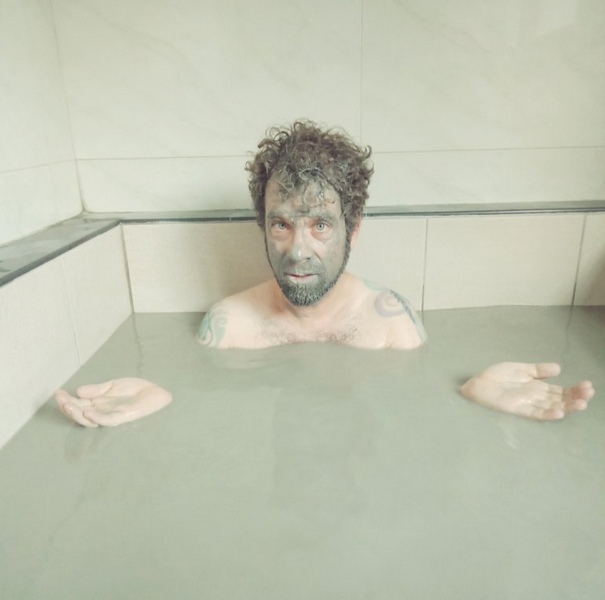
Southern Taiwan’s Coffee Highway
We had another soak in the morning after breakfast before setting out to explore the area surrounding Guanziling. In addition to relaxing waters, northern Tainan is also known for its small-scale coffee farms. Indeed, the area is so well known that a section of route 175 has been dubbed Kāfēi gōnglù, or “coffee highway”. Located about 15 km south of town, the area is a must-visit for any serious coffee lover.
Being coffee aficionados ourselves, we thought it well worth the pilgrimage.
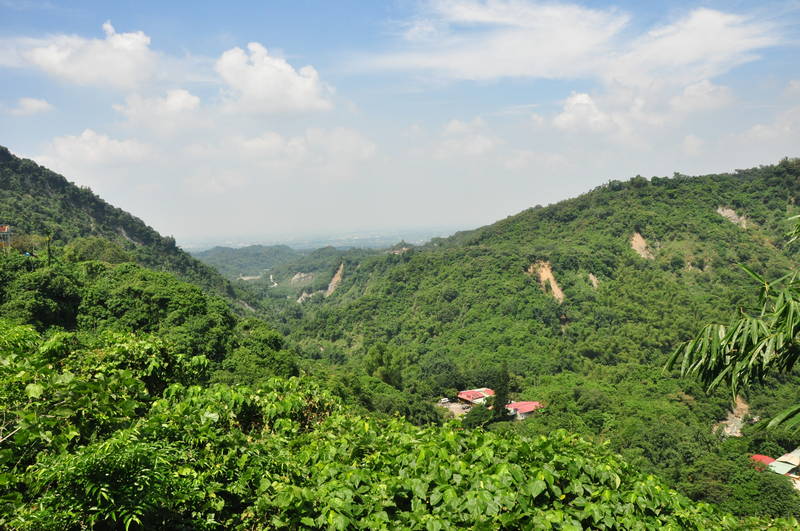
After hitching a quick ride with a local family, Stephanie and I found ourselves at the bottom of a driveway leading up towards Dà chú huā jiān (大鋤花間 733, Tainan City, Dongshan District, 高原里高原109-17號 175咖啡公路11.5公里), a rambling restaurant and coffee shop, part of which is built around a large sprawling tree. It proved to be a unique spot for coffee in every sense of the word.
Taking a seat in the larger building offering particularly beautiful views of the surrounding mountains, we ordered two cups of Dà chú huā jiān’s organic coffee, which was distinctly aromatic, without a trace of bitterness even before we’d added milk. Along with the coffee, our waiter placed three small dishes on the table. One held a few longyen gan (dried dragon eye fruit), another had a small pile of peanuts, and the third simply had a dozen roasted coffee beans.
We began eating them separately, and, well were somewhat puzzled by the attraction.
Moments later, our waiter returned to school us on the proper consumption of this mysterious local delicacy.
“Here,” he said, making a small pouch by peeling the dried longyan from its seed.
“Now this,” he placed a single peanut and coffee been inside the newly created pouch and handed it back to me.
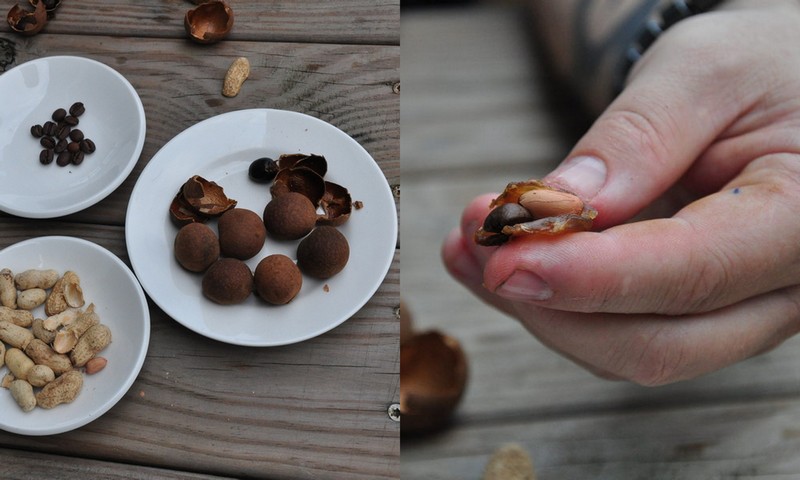
The resulting combination proved more than the sum of its parts, and were quickly consumed alongside the excellent coffee, followed by two pretty good medicinal lamb hot pots made with local vegetables.
A condensed history of coffee in Taiwan
Afterward, we were invited to tour the small coffee farm run by the same family.
As we’ve already covered the history of coffee in Taiwan at Coffee in Taiwan – How an Island of Tea-drinkers came to love the bean, I’ll summarize the history lesson given by Mr. Kou
In a nutshell:
- The Japanese liked coffee and planted it for export back to the home island during the occupation years.
- The Chinese had no use for it when they took Taiwan over and let most of the coffee fields go fallow.
- The Indigenous people were indifferent to coffee as a drink, preferring to use the beans for jewelry.
- Taiwanese farmers realized coffee might be a good cash crop in the 1990s and started a few small-scale farms in various well-placed spots on the island.
Fast forward to the present, and Taiwanese coffee ranks as some of the best (and hardest to find) coffee in the world.
“Export?” Mr. Kuo laughs when I ask if the organic beans his family grows on his seven acres overlooking the hills and plains of northern Tainan are shipped abroad. “We can barely keep up with the demand we have locally.”
Having by now sampled the farm’s beans in a number of iterations, we were not surprised.
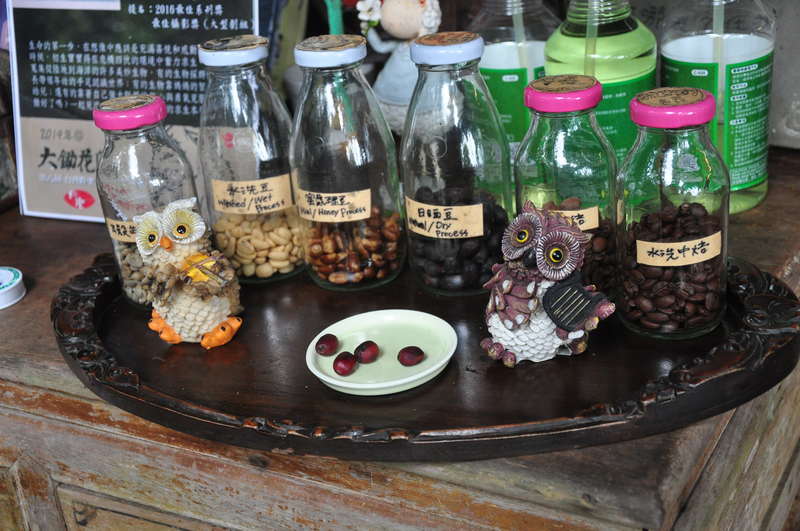
The King’s Garden Villa
After our brief tour, we walked the land a bit, being in no particular hurry to leave the scene of bucolic splendor until we were prompted to do so by a sudden downpour. We caught a ride back to Guanziling at the bottom of the hill and headed back to our second spa of the weekend, the King’s Garden Villa.
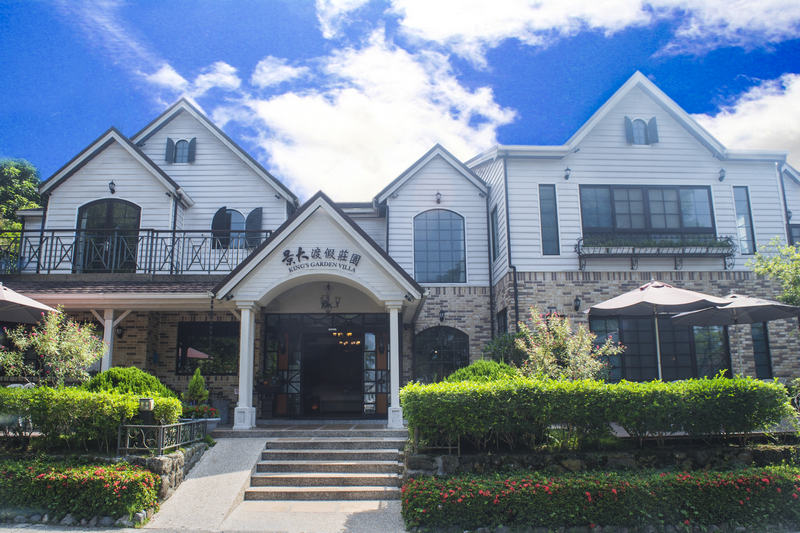
With an English countryside vibe, the King’s Garden Villa kind of lives up to its name, boasting a series of small chalet houses alongside the larger two-story building containing the main hotel and restaurant.
By the time we’d checked into our room at the KGV the coffee had worn off, so we napped until dark, and ate dinner in their restaurant before setting off to enjoy the first of the KGV’s two onsite spas.
The smaller of the two spas is located on the roof, separated by gender, and nice enough to command a visit after the sun has gone down. But the real star attraction of the KGV is the far larger (almost sprawling) complex with a seemingly endless variety of pools. It was this complex that we headed to on our final morning, spending a couple of hours going between the scented hot pools and cold dunks, infrared sauna and steam room with an attached salt-scrub station and applying various holistic facial masks in the upper floor beauty salon. Stephanie spent a few minutes soaking her feet in a pond where small fish nibble dead skin. Being ticklish, I decided against it.
Two hours later and we were completely relaxed, thoroughly exfoliated and feeling considerably cooler in more ways than one. Reluctant though we were to leave, it was time to return to Taipei.

